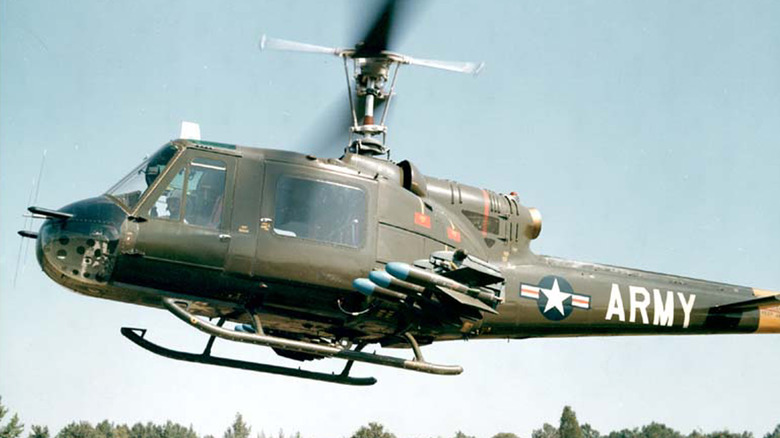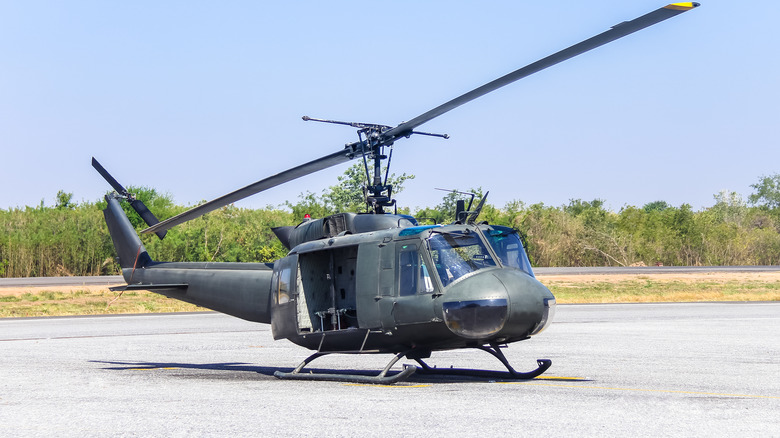The History Of The Army's Workhorse Huey Helicopter
Much like the iconic Jeep was to World War II, the Bell UH-1H Iroquois helicopter, nicknamed the "Huey," is synonymous with images of the war in Vietnam. Multiple generations are familiar with the Huey from its long list of film credits, including "The Deer Hunter," "Platoon," "Apocalypse Now," and dozens more.
The famous aircraft was developed during the 1950s. It was used primarily as a Medical Evacuation (medevac) helicopter, with a capacity for at least two stretchers plus a flight crew and medical personnel, though later variants would have an even higher capacity for patients, soldiers, or cargo. Bell Helicopter's design beat out approximately 20 competitors to win the contract.
In order to provide the necessary thrust, a gas turbine engine was fitted in lieu of a traditional piston engine, a first in a helicopter for any branch of the U.S. Military. The prototype was tagged the HU-1, short for "Helicopter Utility," which is where the nickname Huey originated. By the time the working designation was changed to UH-1, it was too late — the Huey name had stuck. Based on the success of the pre-production units, Bell received an order for additional 100 helicopters in 1960, followed by many, many more.
Not just for medical evacuations
One running change to the Huey in later order cycles was its powerplant. The early turbine engines produced 700 shaft horsepower, which Army pilots found to be a little underpowered for battlefield conditions. Bell's answer was an ever-larger string of turbine engines ranging from 960 horsepower up to 1,400 horsepower in some models during the late-1960s.
The Huey's overall role in the Vietnam War started to morph, too. No longer just a medevac helicopter, some Hueys served as gunships with the addition of machine guns, rocket launchers, and grenade launchers. But "dust-offs," or medical missions, remain the most famous among the Huey's uses. Over the course of the conflict, approximately 900,000 patients were rescued by Hueys and their crews.
Records show that Bell Helicopter built approximately 16,000 Hueys from its inception until 1975. Of those, roughly 7,000 saw service in Vietnam. By some accounts, nearly half of those 7,000 Hueys were destroyed during the course of the war.
The Army's last Huey flew in December 2016. Today, only about a dozen military versions of the Huey are airworthy, mostly flown at air shows or other exhibition events.

